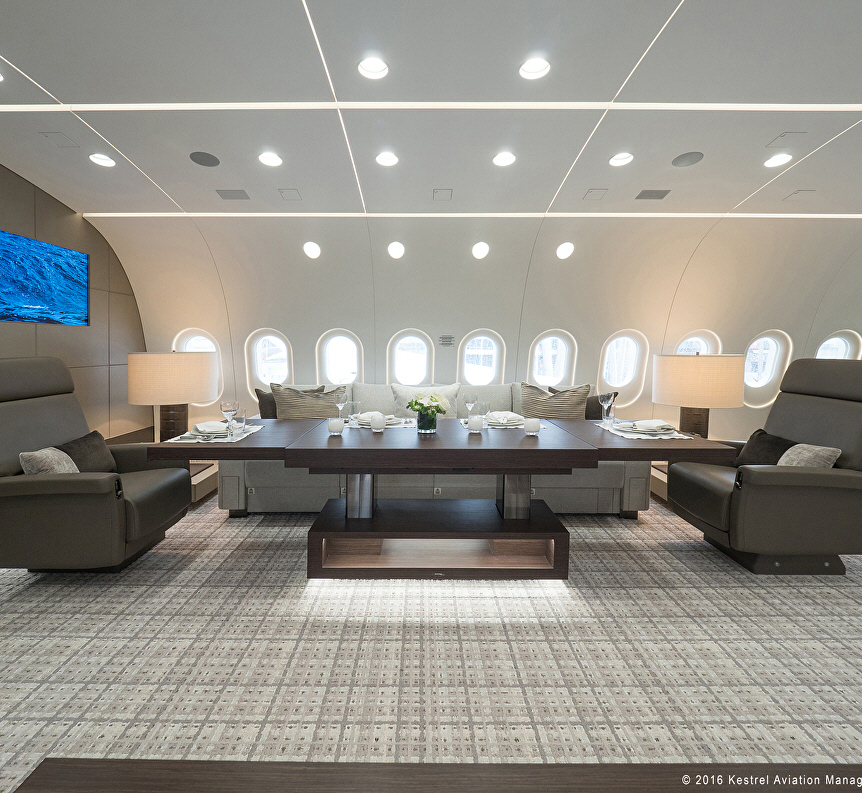En route to cover Autodesk University, I did JFK-to-McCarran in a cramped Airbus A320 where my seatback screen's controls were located on top of a shared armrest. Because the enormous gentleman next to me fell asleep with his arm atop the rest, changing the channel and adjusting the volume required waking him each time. Not the ideal UX.
Naturally, upon landing I asked myself what the opposite flying experience would be. No, not first class; I mean a private jet kitted out by a top designer. And I found it. Behold: A private Boeing 737 with an interior designed by Marc Newson, for the UK's Freestream Aircraft.
Even though there's no one sitting next to you, Newson knows better than to design seat-mounted controls where your arm is going to go. So, he's got them tucked away in a little alcove in the armrest.
Here's the on-board conference room, with an image of the world you and your co-masters-of-the-universe are about to dominate displayed on the flatscreen.
I love that all of the seats, including the couch, have seatbelts. This way you can tell meeting participants to "buckle up," and mean it literally, before you make a momentous announcement.
Meeting participants who express hesitation at your plans for world domination are banished to this small chamber seen at left.
Inside the chamber they sit at this small nook, where they are instructed to read an entire issue of Vanity Fair and prepare a book report on it. The backless seat is meant to communicate a loss of status.
Yes-men, meanwhile, are treated to tea and sweets in this lounge area. Two books are provided for their reading pleasure: The first is your autobiography. The second is a leather-bound collection of book reports on various Vanity Fair issues, to remind them of what happens when they step out of line.
Below you can see that the owner has managed to save up for this jet by sticking with an older MacBook Pro that still has the CD slot in the front. Good things come to those who hold off on upgrading.
On to the master bedroom. Speedboat racing is beamed onto the screen, 24-7, via satellite.
At first, the design language might seem a bit strange: This light fixture over the bed recalls a turbine, perhaps providing a sensation that you'll get sucked up into it while snoozing. Then there are those odd keyhole-shaped fixtures in the leather headboard.
The keyhole shapes turn out to be form-follows-function. They're reading lamps that tuck away when not in use. I don't have a wise-ass comment about these, and I think they are pretty cool.
The master bathroom looks pretty awesome. For starters, the shower is bigger than the one in my Manhattan apartment.
So is the sink and vanity area.
You'll note there is no sign urging you to wipe out the sink basin as a courtesy to the next passenger.
I noticed that the toilet is not shown, and I thought it would be funny if this was actually the toilet. As in, you lift the lid and there's nothing there, just empty sky whizzing past beneath you while your hair starts to blow around.
Anyways, see you in coach.
![]()




















































































































